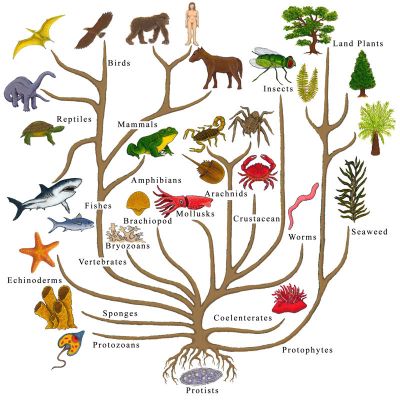 |
| Image Source: https://goo.gl/dxAVVq |
Summary:
Earth is full of life. The life on earth come in different categories, known as species, which is a group of organisms that share very similar traits and appearances to each other. Today, there are approximately 8.7 million species living on earth, according to the New York Times. That is a lot of species to account for. Because of this, there has been a way to classify these organisms. It is known as biological classification, first done by Linnaeus. Biologists classify organisms in a diagram known as a cladogram to show which species have similar traits and which ones do not. The higher the cladogram goes, the less traits species have in common.
SP6 - Constructing Explanations:
This week I constructed explanations through my work in understanding biological classification. In order to understand it, I looked at how species had diversified over the years through the cladogram. All organisms began with DNA. Eventually, some organisms began to have complex cells with organelles inside of them. These organisms were known as eukaryotes while the organisms that didn't have complex cells were either prokaryotic or archae, single cell organisms. Eventually, animals had vertebrae then evolving into tetrapods while some didn't like the shark which only remained having a vertebrae. Soon, some animals begun being bilateral and symmetrical, while some begun to have diapsids. Through the worksheet and the website I was supposed to investigate, I explained how animals diversified through the years.
